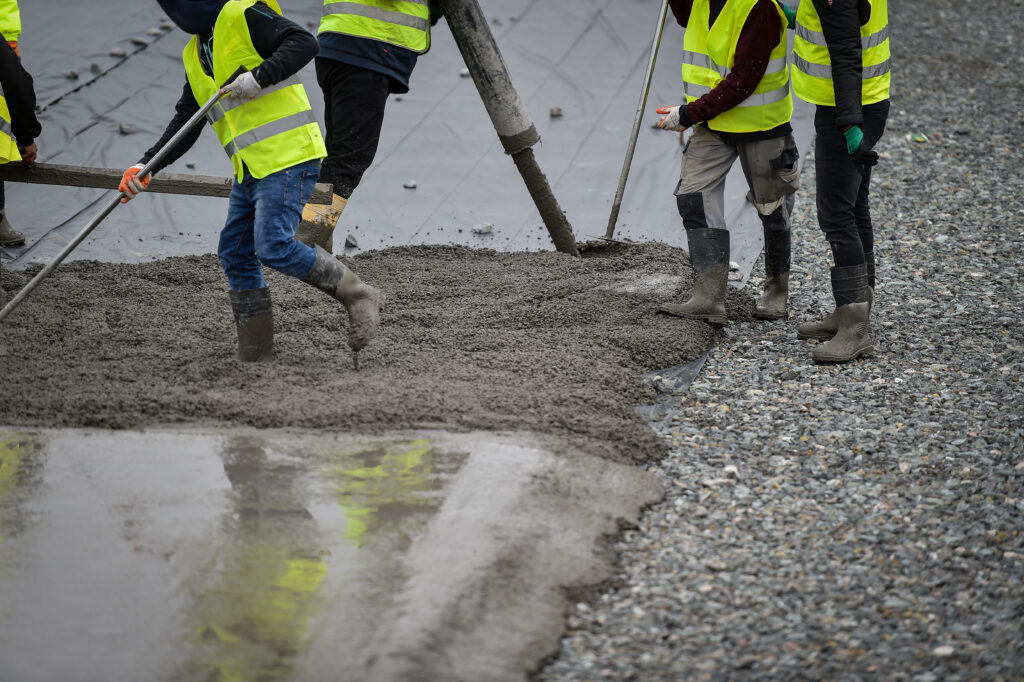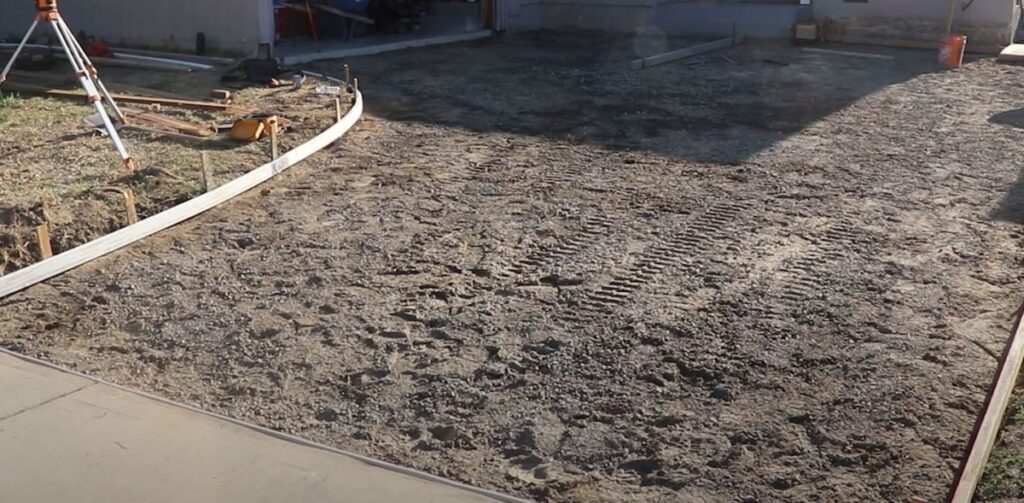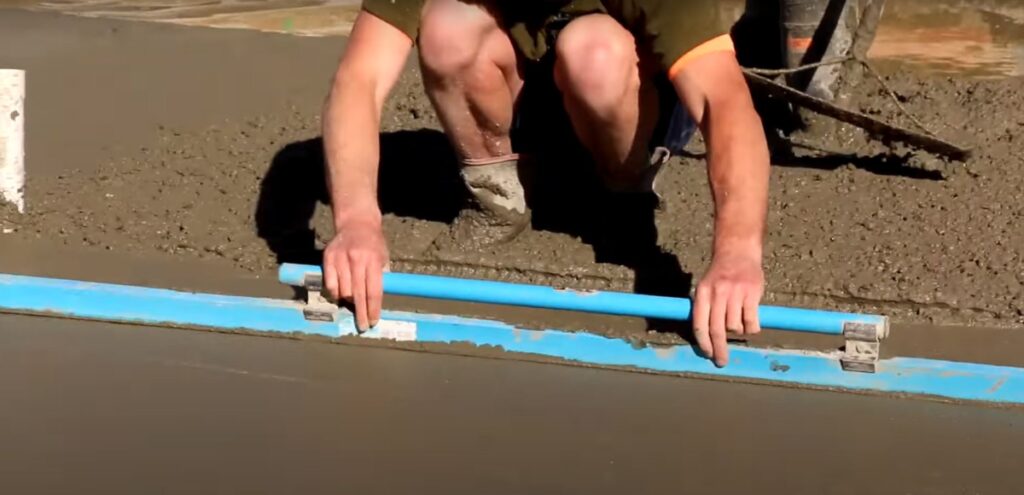Understanding the Science of the Water-Cement Ratio in Concrete
The Crucial Role of the Water-Cement Ratio
The water-cement (w/c) ratio is a pivotal aspect in concrete mix design, directly impacting the strength, durability, and workability of the finished concrete. It’s the ratio of the weight of water to the weight of cement in a concrete mix. A fundamental principle here is that a lower w/c ratio results in stronger, more durable concrete, as it forms a denser and less porous mixture.
Effects of Excess Water
Adding more water than necessary can have adverse effects:
- Excess water leaves voids in the concrete as it evaporates, increasing porosity and permeability.
- The increased porosity weakens the concrete, making it more susceptible to environmental damage and reducing its lifespan.
- Additionally, excess water can lead to segregation and bleeding of concrete, further reducing its strength.
Optimal Water-Cement Ratios
The ideal w/c ratio varies depending on the specific requirements of the concrete application. For high-quality construction, such as in Greenlane, a lower w/c ratio of around 0.4 is preferred for its enhanced strength and resistance to weathering. In contrast, for standard concrete constructions like driveways in Birkenhead, a w/c ratio ranging from 0.6 to 0.7 is typically used.
Health and Safety Aspects
A correct w/c ratio is essential for both the structural integrity of concrete and the safety of those using it. Incorrect ratios can lead to weak concrete, prone to cracking and failure, posing risks to buildings and their occupants.
Adjusting for Local Conditions
In Auckland, where weather conditions can vary, adjusting the w/c ratio is crucial for concrete’s longevity. Professional Concrete Driveways Auckland understands these local nuances and can tailor the w/c ratio to suit specific Auckland conditions, ensuring durable and long-lasting concrete structures.
Technical Aspects
The w/c ratio influences several technical aspects of concrete:
- Compressive Strength: Directly proportional to the w/c ratio.
- Durability: Higher with a lower w/c ratio.
- Workability: Higher ratios result in more workable but weaker concrete.
- Shrinkage: More pronounced with higher w/c ratios, leading to cracking.
Conclusion The science behind the w/c ratio is essential for anyone in Auckland looking to engage in concrete construction projects. Understanding and applying the correct w/c ratio ensures the production of concrete that is not only strong and durable but also safe and suited to the unique environmental conditions of the area. For professional concreters Auckland wide assistance, engaging with experts like Professional Concrete Driveways Auckland is recommended for optimal results.
FAQs on the Importance of Water-Cement Ratio in Concrete
What is the water-cement ratio in concrete?
The water-cement ratio is the ratio of the weight of water to the weight of cement used in a concrete mix. It is a key factor in determining the quality of the concrete.
Why is the water-cement ratio so important in concrete?
The water-cement ratio is crucial because it directly affects the strength, durability, and workability of the concrete. A proper ratio ensures that the concrete has the desired properties for its intended use.
How does the water-cement ratio affect concrete strength?
A lower water-cement ratio typically results in higher concrete strength because it determines the density of the cement paste. A denser paste results in stronger concrete, as there are fewer voids and capillaries within the structure.
Can a high water-cement ratio lead to concrete failure?
Yes, a high water-cement ratio can lead to concrete failure as it increases porosity and permeability, making the concrete weaker and more prone to environmental damage.
What is the ideal water-cement ratio for most concrete applications?
The ideal water-cement ratio typically ranges from 0.4 to 0.6, depending on the specific requirements of the concrete application and environmental conditions.
How does the water-cement ratio impact the durability of concrete?
A lower water-cement ratio increases the durability of concrete by making it less permeable and more resistant to weathering and chemical attacks.
Does the water-cement ratio affect the curing process of concrete?
Yes, the water-cement ratio affects the curing process. A higher ratio can extend the setting time, while a lower ratio can decrease it, impacting the overall curing process.
Can the water-cement ratio influence concrete’s resistance to cracking?
A well-balanced water-cement ratio can reduce the likelihood of cracking by minimizing shrinkage during the drying and curing process.
Is the water-cement ratio the same for all types of cement?
No, the optimal water-cement ratio can vary depending on the type of cement and its specific properties.
How does the water-cement ratio affect the workability of concrete?
A higher water-cement ratio generally makes concrete more workable and easier to place and compact, but it can reduce strength and durability.
Can environmental factors affect the required water-cement ratio?
Yes, environmental factors like temperature, humidity, and wind can necessitate adjustments to the water-cement ratio to ensure proper setting and hardening of the concrete.
What happens if the water-cement ratio is too low?
If the water-cement ratio is too low, the concrete can become too stiff, difficult to work with, and may result in a honeycombed structure due to inadequate filling and compaction.
How is the water-cement ratio calculated in concrete mix design?
The water-cement ratio is calculated by dividing the weight of water in the mix by the weight of cement. For example, a mix with 235 pounds of water and 470 pounds of cement has a water-cement ratio of 0.50.
Does the water-cement ratio affect concrete’s resistance to freeze-thaw cycles?
Yes, a lower water-cement ratio makes concrete more resistant to freeze-thaw cycles by reducing its permeability and susceptibility to water absorption.
How does incorrect water-cement ratio impact the concrete’s color and finish? An incorrect water-cement ratio can affect the uniformity of the concrete’s color and finish. Excess water can lead to a lighter color and a less smooth surface.
What role does the water-cement ratio play in concrete’s resistance to chemical attacks?
A lower water-cement ratio enhances concrete’s resistance to chemical attacks by reducing its permeability and preventing harmful substances from penetrating the surface.
Can the water-cement ratio influence the bonding between concrete and reinforcement?
Yes, the water-cement ratio can influence the bond between concrete and reinforcement. A lower ratio can improve the bond due to the denser and stronger concrete matrix.
How do you ensure the correct water-cement ratio in a concrete mix?
Ensuring the correct water-cement ratio involves accurate measurement of water and cement quantities, considering environmental factors, and adhering to standards like IS 10262 for mix design.




